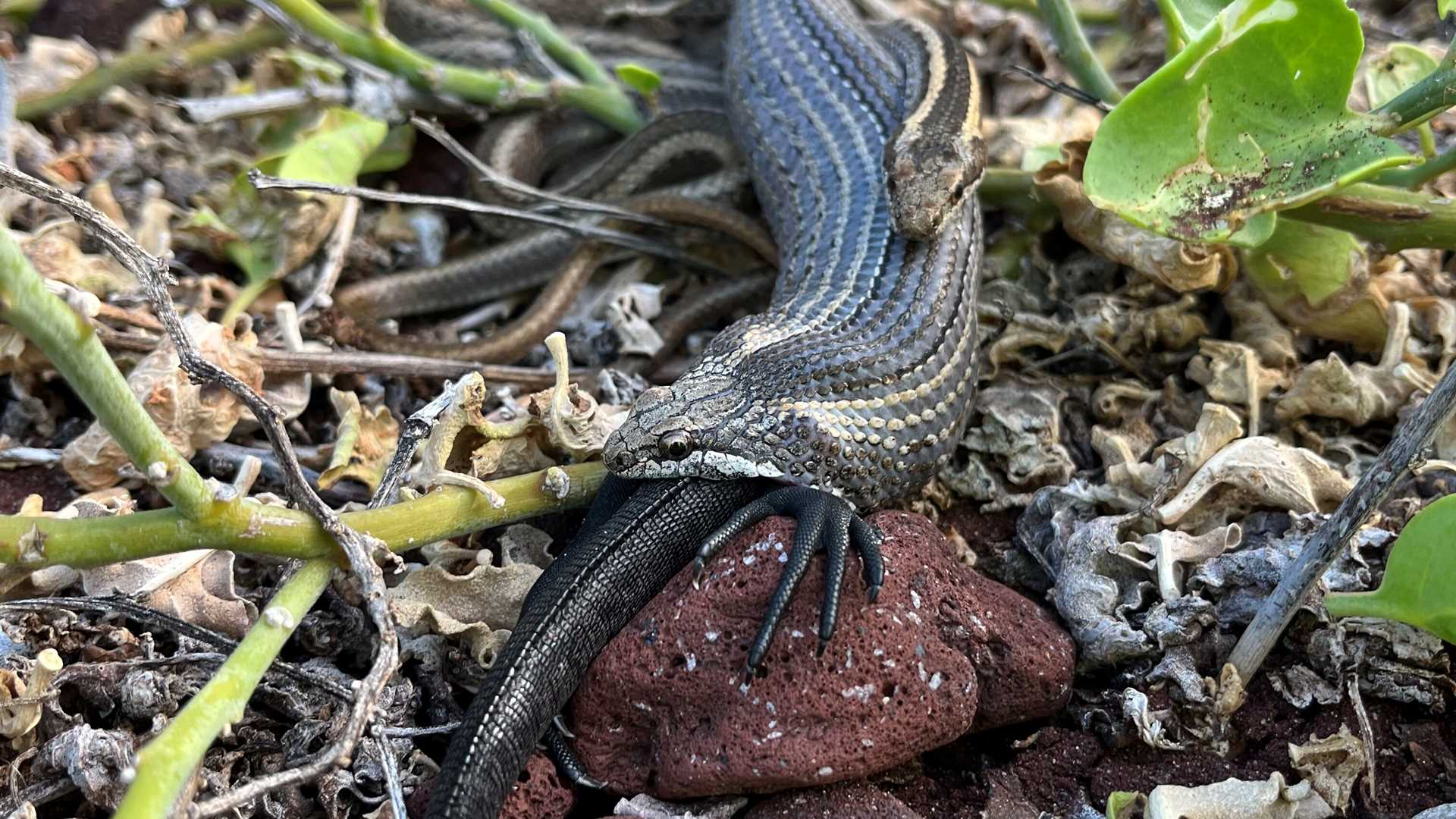Today is our first full day exploring the Galapagos archipelago, but it seems we have seen it all because we have seen so much already! Early in the morning, we hiked on Seymour Island, a bird paradise where we learned about many species of the Galapagos Islands. Above us were hundreds of frigatebirds, easily recognizable by their scissor-tail shape and enormous wingspan of over seven feet. These birds nest in colonies. When the breeding season starts, males inflate their red throat pouches to attract females. Females are identifiable by their white chests and black heads. These birds live in a perpetual summer love, choosing different partners every season. Both the males and the females incubate the egg, and both parents feed the chick. The male leaves when the chick is about 12 weeks old, but the chicks have super moms who continue to feed them for another four months until they fledge.
We also spotted one of our favorite animals, the blue-footed booby. These birds are well known by their colorful feet and also by their spectacular mating dance. During typical displays, the male shows off his blue feet to potential mates. This bright blue color is the most attractive characteristic they have. Sometimes this display is not enough, and the male must perform, singing and dancing to catch the female’s attention. Moreover, a male will give the female presents in the form of small sticks and rocks delivered to her blue feet. If a female likes the male’s courtship, the two birds will dance together to confirm that they are in a serious relationship.
In the afternoon, we moved to Rabida Island, where we snorkeled and played with beautiful Galapagos sea lions. To our surprise, a naturalist spotted a Santiago racer snake hidden under the bushes. This snake is also known as the God-of-Fire racer. In general, snakes are very difficult to spot in the Galapagos. They inhabit volcanic rock areas and dry grasslands. This snake is diurnal and is active throughout most of the day, but usually not during hot midday hours. The God-of-Fire racer is mildly venomous, which means their bite is dangerous to small prey, but don’t worry: they cannot harm humans. These snakes usually hunt geckos or lava lizards, but baby marine iguanas are the special of the season. One of the snakes hunted and successfully ate the prey. While it was trying to swallow, other snakes crowded around to get a taste of the meal.
I can describe just a little bit of what we have seen, but what our hearts experienced in these close encounters cannot be expressed. Animals were literally everywhere. With every step we took on the trail, we found fearless and friendly animals. It is indeed a unique feeling to be surrounded by such pure and pristine nature. We can’t imagine a better day than this expedition. What a fabulous way to start our journey aboard National Geographic Endeavour II.
PHOTO: Santiago racer snake or God-of-Fire racer eating a marine iguana in Rabida Island. Photo by Walter Perez







